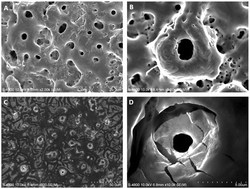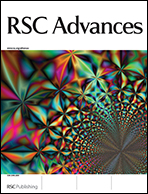MiR-148b laden titanium implant promoting osteogenic differentiation of rat bone marrow mesenchymal stem cells
Abstract
Functionalizing the titanium (Ti) implants with bioactive agents appears to be attractive for accelerating osseointegration. MicroRNAs that are used by nature to control differentiation pathways are good candidates for Ti functionalization. In this study, we lyophilized miR-148b, which has osteogenic abilities, on a microporous Ti implant formed by micro-arc oxidation (MAO). Chitosan was utilized as the vector due to its multiple good merits including good cytocompatibility. The surface morphology, miR-148b release profile and transfection efficiency of the miR-148b laden Ti implant were assessed. Afterwards, the effects of the miR-148b laden Ti implant on the viability and osteogenic differentiation of primary rat bone marrow mesenchymal stem cells (MSCs) were observed. The results showed that the miR-148b laden Ti implant generated delayed miR-148b release and prolonged transfection, which consequently gave rise to enhanced osteogenic differentiation of MSCs marked by the up-regulated expression of genes including collagen type I α 1, alkaline phosphatase (ALP-2), bone morphogenetic protein-2 and the promoted ALP product, collagen amount and extracellular matrix (ECM) mineralization. The microRNA functionalization could possibly be considered as a novel method to develop advanced dental implants.

- This article is part of the themed collection: Bioactive surfaces for hard tissue regeneration

 Please wait while we load your content...
Please wait while we load your content...